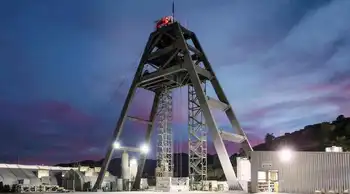Official: Worker error led to power outage
LAKE WYLIE, NORTH CAROLINA - The loss of power May 20 to the Catawba nuclear plant, leading to the shutdown of both its reactors, was a rare and unsettling event, experts say.
Inaccurate settings by Duke Energy workers on electrical relays appear to have led to the break in power at the Lake Wylie plant less than 20 miles from uptown Charlotte, a Nuclear Regulatory Commission official said.
The plant's two reactors automatically shut down, as they're supposed to, when electricity to the plant was interrupted.
Duke declared an "unusual event," the lowest of four emergency stages.
Diesel generators came on to circulate cooling water to the hot core and remove radioactive steam that remains bottled up in the plant after the reactors stop.
Despite multiple backup systems, experts say, no utility wants to experience what Duke did.
"It's like your car's air bag," said Dave Lochbaum of the Union of Concerned Scientists. "You think it will work, but you don't want to slam into a brick wall to find out."
An NRC team arrived recently to investigate the shutdown and whether safety systems worked properly. The incident adds no risk to the public, an NRC official said.
Catawba has a 3 percent to 5 percent chance of losing off-site power in a year, Duke's analyses predict. The average nuclear reactor automatically shut downs less than once a year, according to industry data. The last "trip" at Catawba happened in 2003, NRC records show.
Even more unusual is for two reactors to shut down, said Paul Turinsky, nuclear engineering chairman at N.C. State University.
The NRC, whose investigative team is expected to be at Catawba all week, believes it knows what happened that day.
A current transformer in a switchyard at the plant failed, said Charles Casto, who heads the NRC's division of reactor projects for the Atlanta region. But time-delay relays, which work like home circuit breakers, were apparently set inaccurately by plant workers.
Instead of one breaker tripping, isolating the transformer problem, 12 more opened, Casto said. That broke the power connection to the plant.
Duke is still investigating why both reactors, instead of just one, shut down, a spokesman said.
The NRC will review whether Duke should have caught the problem before May 20, Castro said, and whether the plant's emergency procedures worked correctly.
"Obviously," Casto said, "we worry about everything."
Related News

Hydro-Québec to Invest $750 Million in Carillon Generating Station
MONTREAL - Hydro-Québec will invest $750 million to refurbish its Carillon generating station, mainly to replace six generating units. The investment also covers the cost of civil engineering work, including making adjustments to water passageways, upgrading electrical equipment and replacing the station roof. Work will start in 2021 and continue until 2027.
Carillon generating station is a run-of-river power plant consisting of 14 generating units with a total installed capacity of 753 MW. Built in the early 1960s, it is a key part of Hydro-Québec's hydroelectric generating fleet. The station is close to the greater Montréal area and feeds power into…




